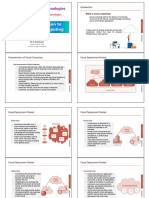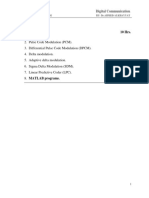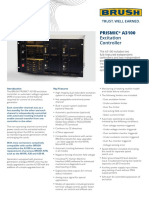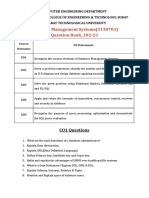0% found this document useful (0 votes)
24 views4 pagesCloud Computing and Networking - 5 Page Notes
The document provides an overview of cloud computing, detailing its definition, key characteristics, benefits, types of services, and deployment models. It also covers networking fundamentals, including types of networks, devices, protocols, and security measures. Finally, it discusses the integration of cloud and networking, highlighting their interdependence and future trends such as 5G and AI.
Uploaded by
Razeen RamzyCopyright
© © All Rights Reserved
We take content rights seriously. If you suspect this is your content, claim it here.
Available Formats
Download as PDF, TXT or read online on Scribd
0% found this document useful (0 votes)
24 views4 pagesCloud Computing and Networking - 5 Page Notes
The document provides an overview of cloud computing, detailing its definition, key characteristics, benefits, types of services, and deployment models. It also covers networking fundamentals, including types of networks, devices, protocols, and security measures. Finally, it discusses the integration of cloud and networking, highlighting their interdependence and future trends such as 5G and AI.
Uploaded by
Razeen RamzyCopyright
© © All Rights Reserved
We take content rights seriously. If you suspect this is your content, claim it here.
Available Formats
Download as PDF, TXT or read online on Scribd
/ 4











































































































